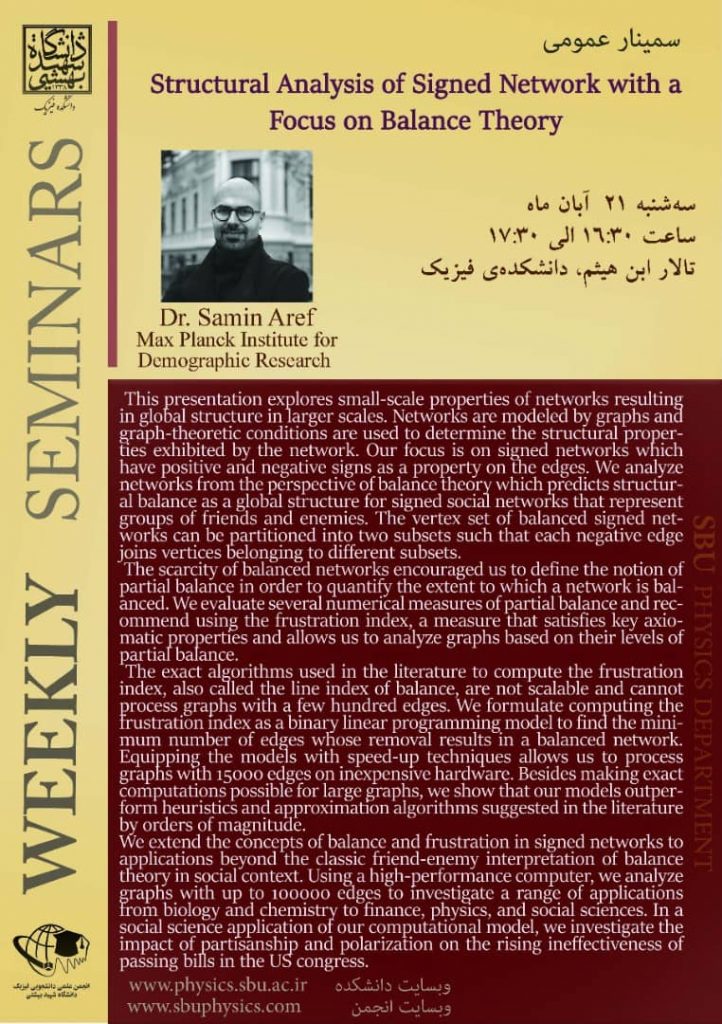Dr. Samin Aref
Max Planck Institute for Demographic Research

This presentation explores small-scale properties of networks resulting in global structure in larger scales. Networks are modeled by graphs and graph-theoretic conditions are used to determine the structural properties exhibited by the network. Our focus is on signed networks that have positive and negative signs as a property on the edges. We analyze networks from the perspective of balance theory which predicts structural balance as a global structure for signed social networks that represent groups of friends and enemies. The vertex set of balanced signed networks can be partitioned into two subsets such that each negative edge joins vertices belonging to different subsets.
The scarcity of balanced networks encouraged us to define the notion of partial balance in order to quantify the extent to which a network is balanced. We evaluate several numerical measures of partial balance and recommend using the frustration index, a measure that satisfies key axiomatic properties and allows us to analyze graphs based on their levels of partial balance.
The exact algorithms used in the literature to compute the frustration index, also called the line index of balance, are not scalable and cannot process graphs with a few hundred edges. We formulate computing the frustration index as a binary linear programming model to find the minimum number of edges whose removal results in a balanced network. Equipping the models with speed-up techniques allows us to process graphs with 15000 edges on inexpensive hardware. Besides making exact computations possible for large graphs, we show that our models outperform heuristics and approximation algorithms suggested in the literature by orders of magnitude.
We extend the concepts of balance and frustration in signed networks to applications beyond the classic friend-enemy interpretation of balance theory in a social context. Using a high-performance computer, we analyze graphs with up to 100000 edges to investigate a range of applications from biology and chemistry to finance, physics, and social sciences. In a social science application of our computational model, we investigate the impact of partisanship and polarization on the rising ineffectiveness of passing bills in the US congress
Aban 21st
16:30 – 17:30
Ibn-Alhaytham Hall, Physics Dept.